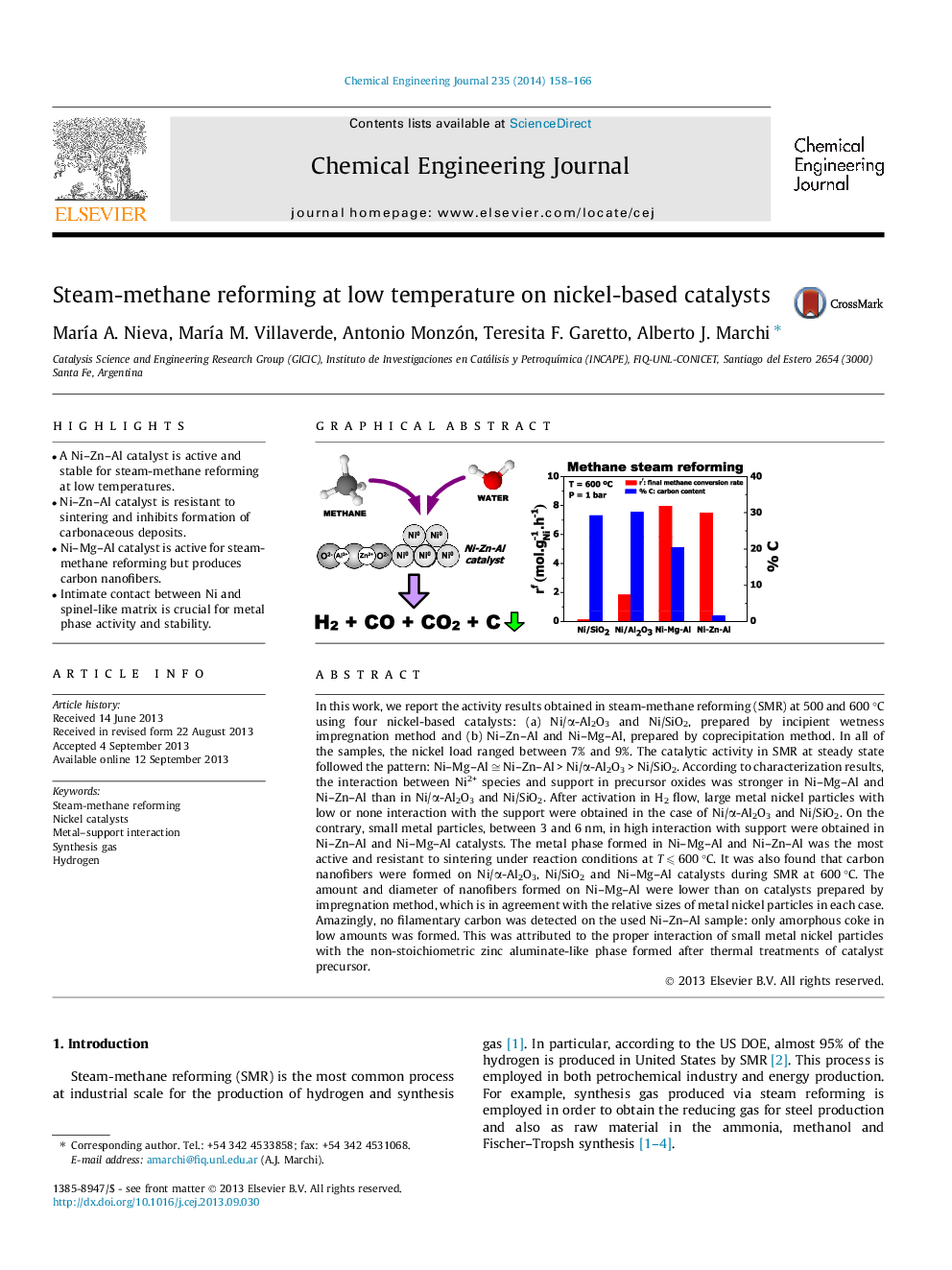| کد مقاله | کد نشریه | سال انتشار | مقاله انگلیسی | نسخه تمام متن |
|---|---|---|---|---|
| 148341 | 456409 | 2014 | 9 صفحه PDF | دانلود رایگان |
• A Ni–Zn–Al catalyst is active and stable for steam-methane reforming at low temperatures.
• Ni–Zn–Al catalyst is resistant to sintering and inhibits formation of carbonaceous deposits.
• Ni–Mg–Al catalyst is active for steam-methane reforming but produces carbon nanofibers.
• Intimate contact between Ni and spinel-like matrix is crucial for metal phase activity and stability.
In this work, we report the activity results obtained in steam-methane reforming (SMR) at 500 and 600 °C using four nickel-based catalysts: (a) Ni/α-Al2O3 and Ni/SiO2, prepared by incipient wetness impregnation method and (b) Ni–Zn–Al and Ni–Mg–Al, prepared by coprecipitation method. In all of the samples, the nickel load ranged between 7% and 9%. The catalytic activity in SMR at steady state followed the pattern: Ni–Mg–Al ≅ Ni–Zn–Al > Ni/α-Al2O3 > Ni/SiO2. According to characterization results, the interaction between Ni2+ species and support in precursor oxides was stronger in Ni–Mg–Al and Ni–Zn–Al than in Ni/α-Al2O3 and Ni/SiO2. After activation in H2 flow, large metal nickel particles with low or none interaction with the support were obtained in the case of Ni/α-Al2O3 and Ni/SiO2. On the contrary, small metal particles, between 3 and 6 nm, in high interaction with support were obtained in Ni–Zn–Al and Ni–Mg–Al catalysts. The metal phase formed in Ni–Mg–Al and Ni–Zn–Al was the most active and resistant to sintering under reaction conditions at T ⩽ 600 °C. It was also found that carbon nanofibers were formed on Ni/α-Al2O3, Ni/SiO2 and Ni–Mg–Al catalysts during SMR at 600 °C. The amount and diameter of nanofibers formed on Ni–Mg–Al were lower than on catalysts prepared by impregnation method, which is in agreement with the relative sizes of metal nickel particles in each case. Amazingly, no filamentary carbon was detected on the used Ni–Zn–Al sample: only amorphous coke in low amounts was formed. This was attributed to the proper interaction of small metal nickel particles with the non-stoichiometric zinc aluminate-like phase formed after thermal treatments of catalyst precursor.
Figure optionsDownload as PowerPoint slide
Journal: Chemical Engineering Journal - Volume 235, 1 January 2014, Pages 158–166
